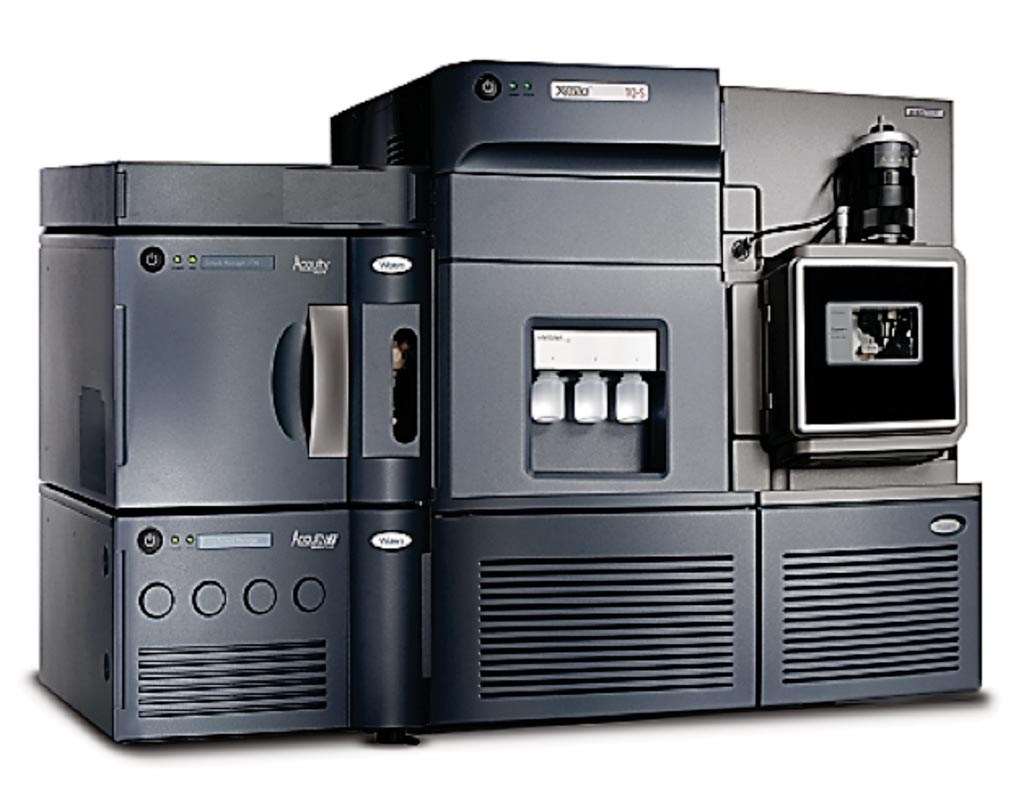Lipidome Tested As Predictor in T2DM Progression
By LabMedica International staff writers
Posted on 11 Jan 2018
Type 2 diabetes mellitus (T2DM) is a multifactorial metabolic disorder characterized by hyperglycemia, which results from impaired insulin secretion of pancreatic β-cells and from ineffective cellular response to insulin.Posted on 11 Jan 2018
Prediabetes is currently characterized, once glucose has become elevated, by impaired fasting glucose (IFG), impaired glucose tolerance (IGT) or both. IFG and IGT are not equivalent by metabolic terms and, most likely, reflect different pathophysiological states leading to T2DM.

Image: The ACQUITY UPLC I-Class / Xevo TQ-S IVD system (Photo courtesy of Waters).
Scientists at the Steno Diabetes Center Copenhagen (Denmark) and their colleagues applied global lipidomic profiling on plasma samples from well-phenotyped men (107 cases, 216 controls) participating in a longitudinal study at baseline and at five-year follow-up. To validate the lipid markers, an additional study with a representative sample of 631 adult males was also conducted.
A total of 277 plasma lipids were analyzed using the lipidomics platform based on ultra-performance liquid chromatography coupled to time-of-flight mass spectrometry. Lipid extracts were then analyzed on the Q-Tof Premier mass spectrometer with the Acquity ultra performance liquid chromatography (UPLC). Lipids with the highest predictive power for the development of T2DM were computationally selected, validated and compared to standard risk models without lipids. Glucose tolerance status was assessed on plasma glucose levels in OGTT and HbA1c measurements.
The investigators found that a persistent lipid signature with higher levels of triacylglycerols and diacyl-phospholipids as well as lower levels of alkylacyl phosphatidylcholines was observed in progressors to T2DM. Lysophosphatidylcholine acyl C18:2 (LysoPC(18:2)), phosphatidylcholines PC(32:1), PC(34:2e) and PC(36:1), and triacylglycerol TG(17:1/18:1/18:2) were selected to the full model that included metabolic risk factors. When further adjusting for body mass index (BMI) and age, these lipids had respective odds ratios of 0.32, 2.4, 0.50, 2.2 and 0.31 for progression to T2DM.
The authors concluded that their study indicates that a lipid signature characteristic of T2DM is present years before the diagnosis and improves prediction of progression to T2DM. Molecular lipid biomarkers were shown to have predictive power also in a high-risk group, where standard risk factors are not helpful at distinguishing progressors from non-progressors. The study was published in the January 2018 issue of the journal Metabolism Clinical and Experimental.
Related Links:
Steno Diabetes Center Copenhagen













